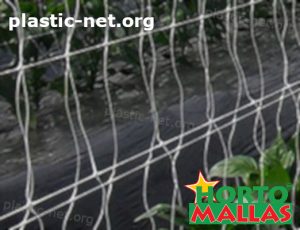Have you heard a lot about plastic netting? Maybe you have heard it from some of your friends who want to venture into manufacturing of the plastic nets or buying plastic nets to use for different purposes and you are curious to know what it is all about. This is all you need to know about plastic netting;

- They serve different purposes which includes; tree guard, gutter screen, safety nets, scaffold nets, debris and more.
- Plastic netting is broadly used because it is more affordable and durable than other nets.
- There are vast choices to choose from when it comes to plastic netting as it comes in different colors, sizes and innovative designs for your fence. They are very durable and can last for a long time.
- They are widely used in garden jobs, plant protection, fencing and much more.
- They are also safe enough for kids to have access to.
- They help to protect your tree from any form of damage as they serve as tree shields.
- They help transmit airflow and light even though they can be rigid.
Below is a detailed description of the production of plastic netting and its different types.

Plastic netting comes in different thicknesses, weights and sizes of holes. They are manufactured through weaving or expansion processes. Plastic extrusion is another manufactured process with great features and invented in a long and continuous method where synthetic resin bits are dissolved and passed through a die to create a mesh that is continuous. The product is manufactured finally as plastic net. Plastic extrusion is created in a pattern that varies from fine graded plastic netting that looks like a fabric that is woven to a coarse graded plastic netting mainly for plastic set-up fencing. There are various resins and the device for creating plastic nets vary which is dependent on the different raw materials, fixed product duration, specifications and product necessities. Most netting will probably undergo additional procedures such as lamination, sheeting, calendaring, rewinding, slitting, orientation processes and more.
Netting for agriculture comes in different varieties which includes;

-
Woven plastic mesh fabric:
The thickness in a particular strand for a mesh opening is stated by organizing threads per inch. Mesh fabrics that are woven are created by merging monofilament threads through a superior looms and finishing tools. They are nicely woven to function perfectly. In other words, they are knitted netting which is made of plastic yarns and very similar to the textile procedure. Knitted netting provides a higher flexibility and can be mobile without tensile force sacrifice. Different innovative techniques can be used to create this plastic netting.
-
Diamond Mesh Plastic Netting:
This is a plastic extrusion that uses counter-revolving dies. Joints generally are created when 2 strands overlay or intersect each other creating a unique diamond netting pattern. Two different flow channels or planes are formed whenever the counter strands tends to overlap. Two times the thickness of one strand makes up the entire product thickness.
-
Expanded Plastic Mesh:
The expanded plastic mesh is created by splitting plastic piece stock using a controlled system, then expanding or stretching the width in order to create the chosen nominal hole size. Measurements for oriented and extruded mesh are different from that of the expanded mesh in terms of calculating their dimensions.
-
Square Mesh Plastic Netting:
Square mesh plastic netting normally have one flattened side formed using the blistering extruded mesh tube that passes above a mandrel. This netting extrudes by making use of a circular swinging die plate. The hole size about the circumference of a die plate determines the longitudinal string. Anytime the die plate unlocks, traverse strands are formed which creates a fundamental joint production along XY plane. Spacing and traverse thickness of strand can be regulated in development to form rectangular or square apertures.

-
Tubular Plastic Mesh:
This type of mesh are extruded which uses similar extrusion method of diamond mesh but left in a tubular structure.
-
Oriented Plastic Netting:
This plastic netting is created in an advanced procedure by melting and elongating extruded square netting to form a very light weighted product with an advanced capability to mass ratios.